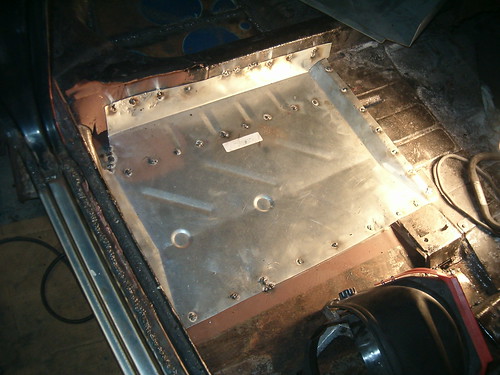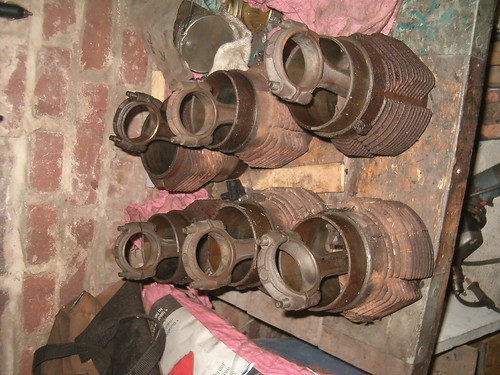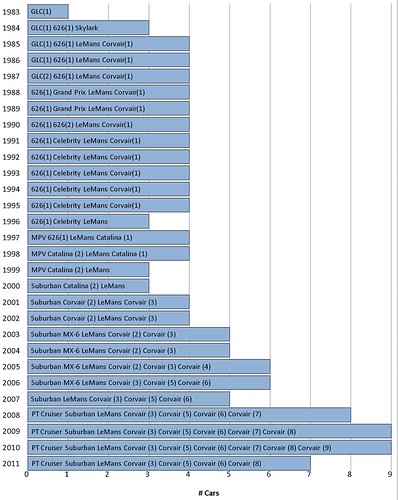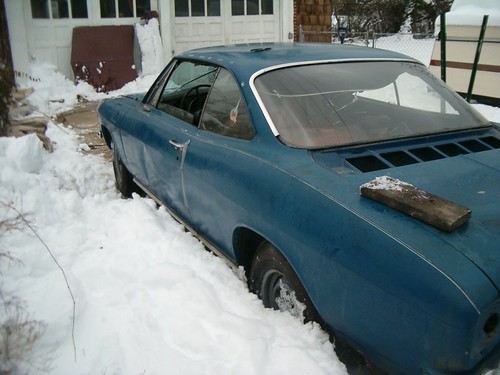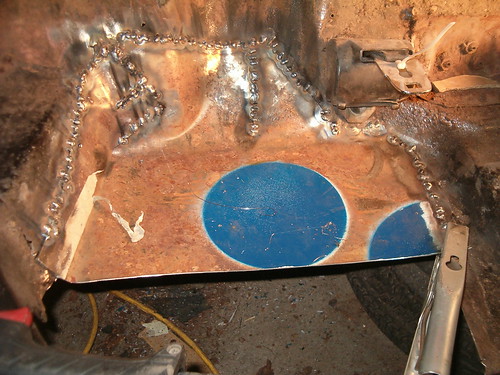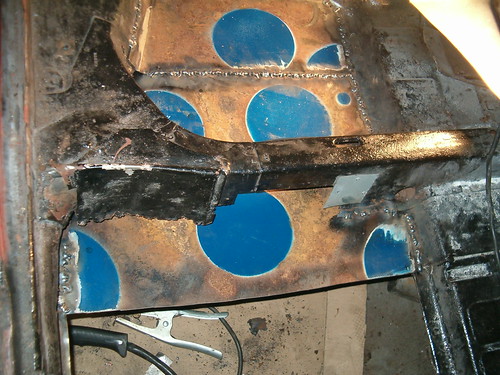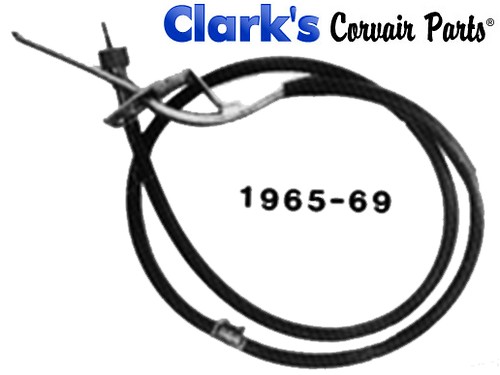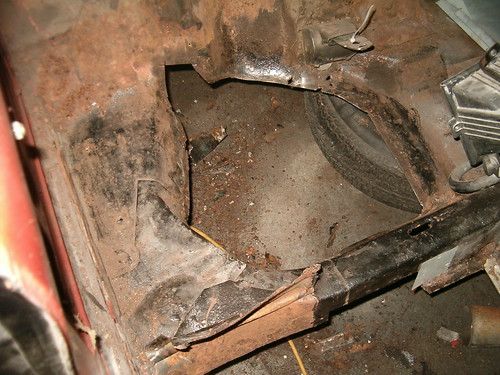 Yesterday morning, after church, I drove Lucy to the Corvair Ranch with a LM hood strapped to the roof and a box with heads sitting in the back. It was Open House 2011. My first stop after arrival was a visit to the feast they had laid out for the attendees. I filled a plate with good eats and a cup with pink lemonade, and made my way back to Lucy to fill my belly. Then, after waiting for my turn at the part’s counter, I placed my order for valve guide replacement in the heads I was dropping off, closed the deal on swapping the good hood for one with rust around the edges, and paid for the GUP turn-signal switch assembly and the GUP rear view mirror for Glinda. The latter of which I got to choose from the two box-fulls Jeff led me to in the backroom. There were, of course, different styles available, so I had to find a ’68 in the parking lot – not difficult with the abundance of driver ‘vairs – to see what the correct one looked like, and then paw through the boxes to find a nice example. I ended up with one that’s a huge improvement from what Victoria’s currently peering at.
Yesterday morning, after church, I drove Lucy to the Corvair Ranch with a LM hood strapped to the roof and a box with heads sitting in the back. It was Open House 2011. My first stop after arrival was a visit to the feast they had laid out for the attendees. I filled a plate with good eats and a cup with pink lemonade, and made my way back to Lucy to fill my belly. Then, after waiting for my turn at the part’s counter, I placed my order for valve guide replacement in the heads I was dropping off, closed the deal on swapping the good hood for one with rust around the edges, and paid for the GUP turn-signal switch assembly and the GUP rear view mirror for Glinda. The latter of which I got to choose from the two box-fulls Jeff led me to in the backroom. There were, of course, different styles available, so I had to find a ’68 in the parking lot – not difficult with the abundance of driver ‘vairs – to see what the correct one looked like, and then paw through the boxes to find a nice example. I ended up with one that’s a huge improvement from what Victoria’s currently peering at.Amidst some strange looks, I pulled the good, solid hood off Lucy’s roof and set it next to the main building. I got even more strange looks when I strapped the rotted one atop my car. Finally, someone asked me what the heck I was doing. I explained how I needed some sheetmetal to patch the floor, and I had this nice hood to cut pieces from, but I couldn’t bring myself to destroy a perfectly good hood. Jeff was willing to trade a bad one for the good one, so I get enough metal and he gets a nice hood to sell or use in a restoration project.
It was then around 2 and time for the technical talk on gas heaters. Jeb, who just happens to be a friend of Ariel’s boyfiend, has refurbished and installed gas heaters in both of his Corvairs, an EM convertible and a Greenbrier. Neither of these cars originally came with them, so it took some engineering to get everything working right. I think he sold quite a few people on the advantages of this rare accessory. It was, by the way, standard on the 1960 models, and an option until the new 1965s came out.
I then took some time to walk around the parking lot and shoot the photos. Here are links to the Flickr sets: Set 1 and Set 2.
Soon, though, it was time for the raffle. Basically, everyone got a different door prize, and then all the tickets were put back into the jar for the grand prize drawing. Wouldn’t you know it, I won. Yep, a $100 gift certificate will come in quite handy when I place my order for engine rebuild parts. Quite the unexpected pleasure.
With the raffle completed and me on cloud nine, I took a stroll through the backyard of cars. No trip to the Ranch is complete without a stroll amongst the relics. Since I’ve probably taken pictures of most of the cars back there at one time or another, my new photo game is picking a theme and shooting photos that meet that theme. This time I decided to see how many different seat cloth patterns I could find. The set is posted here. While walking I found a few pieces of carb linkage that pocketed and then headed to find Jeff to pony up the $1 for them.
With that transaction complete, it was time to hit the road. I pulled into the driveway around 5:15.
By the way, the photo at the top is of the newest Corvair that attended the event. I'll post more on it tomorrow.


